Abstract
Models containing networks of neuron-like units have become increasingly prominent in the study of both cognitive psychology and artificial intelligence. This article describes the basic features of connectionist models and provides an illustrative application to compound-stimulus effects in respondent conditioning. Connectionist models designed specifically for operant conditioning are not yet widely available, but some current learning algorithms for machine learning indicate that such models are feasible. Conversely, designers for machine learning appear to have recognized the value of behavioral principles in producing adaptive behavior in their creations.
Keywords: connectionist models, neural networks, operant conditioning, respondent conditioning, stimulus control, mixed schedules, concurrent schedules
Full text
PDF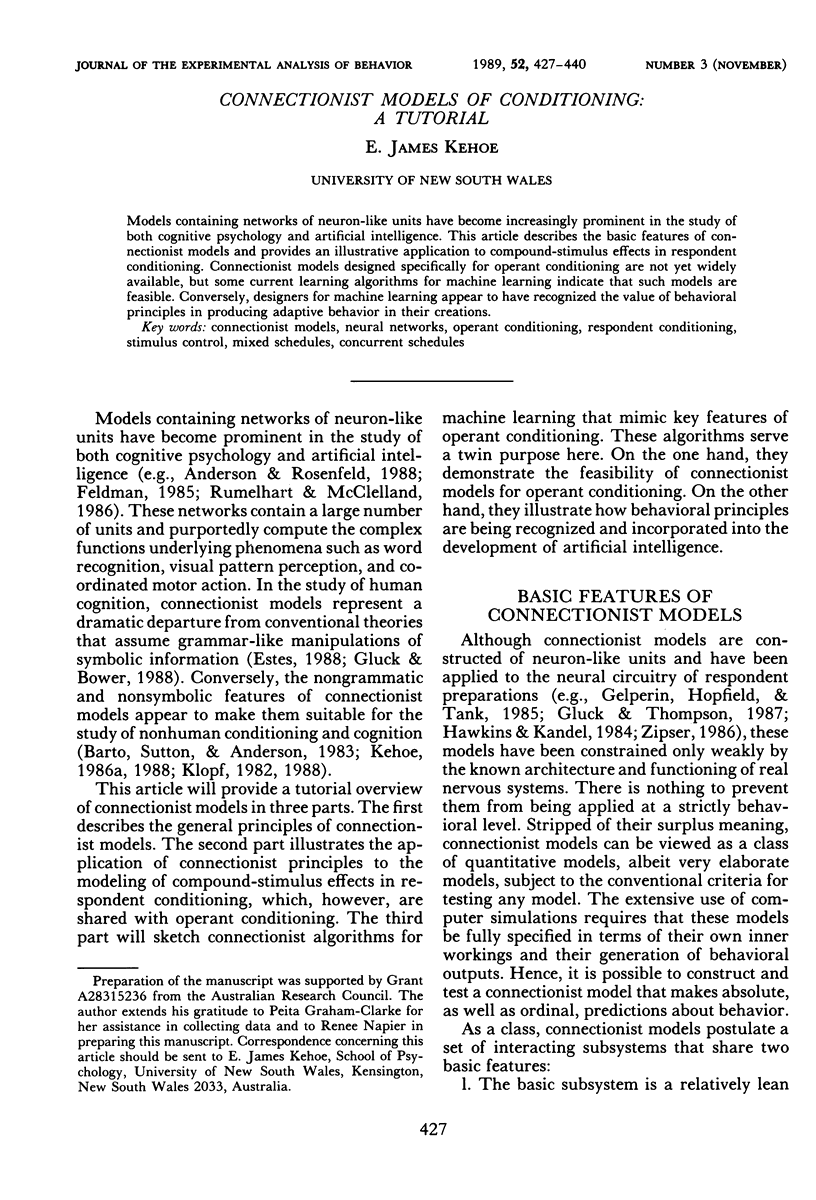

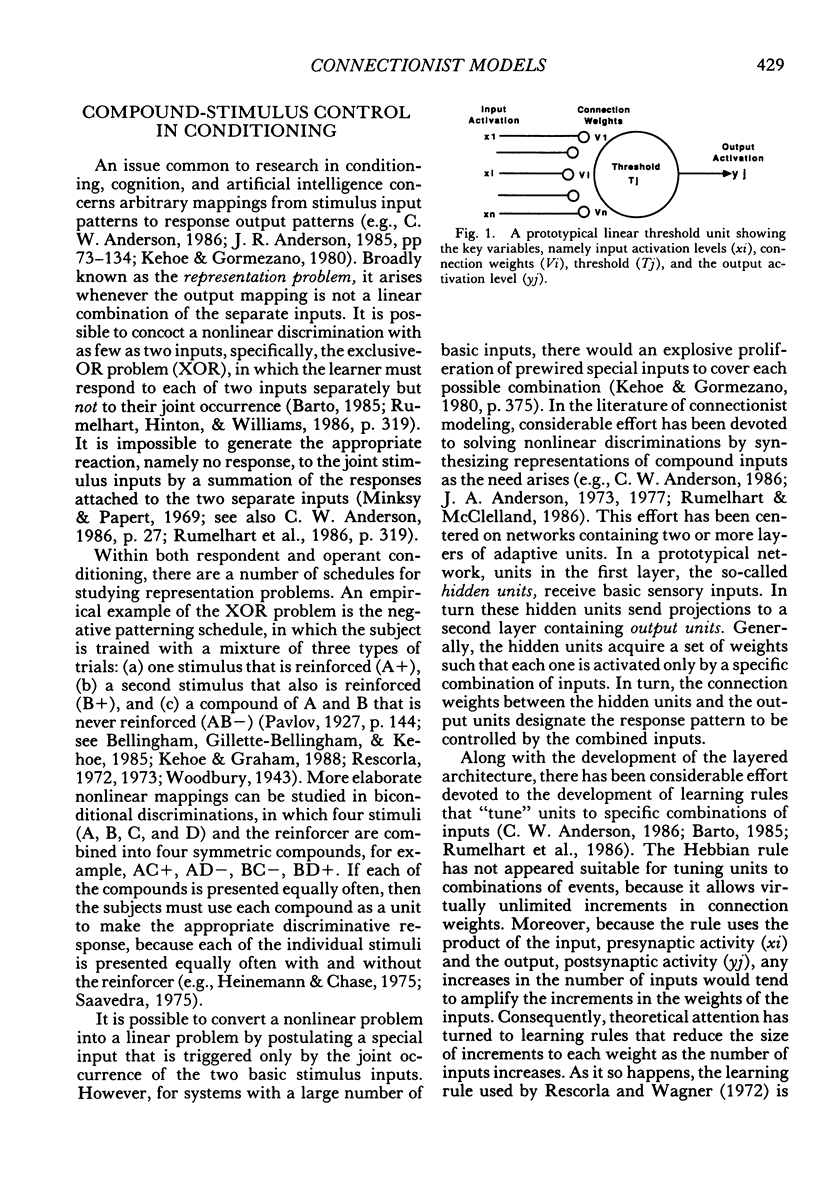
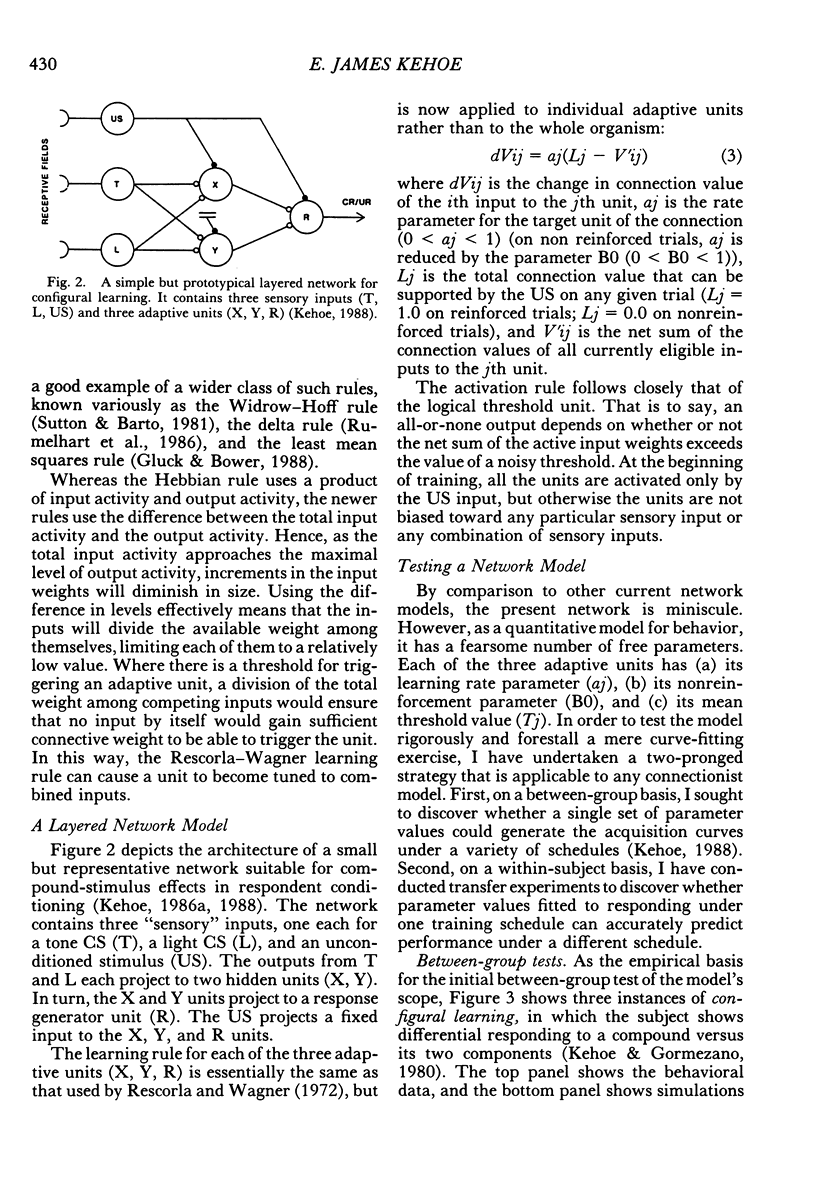
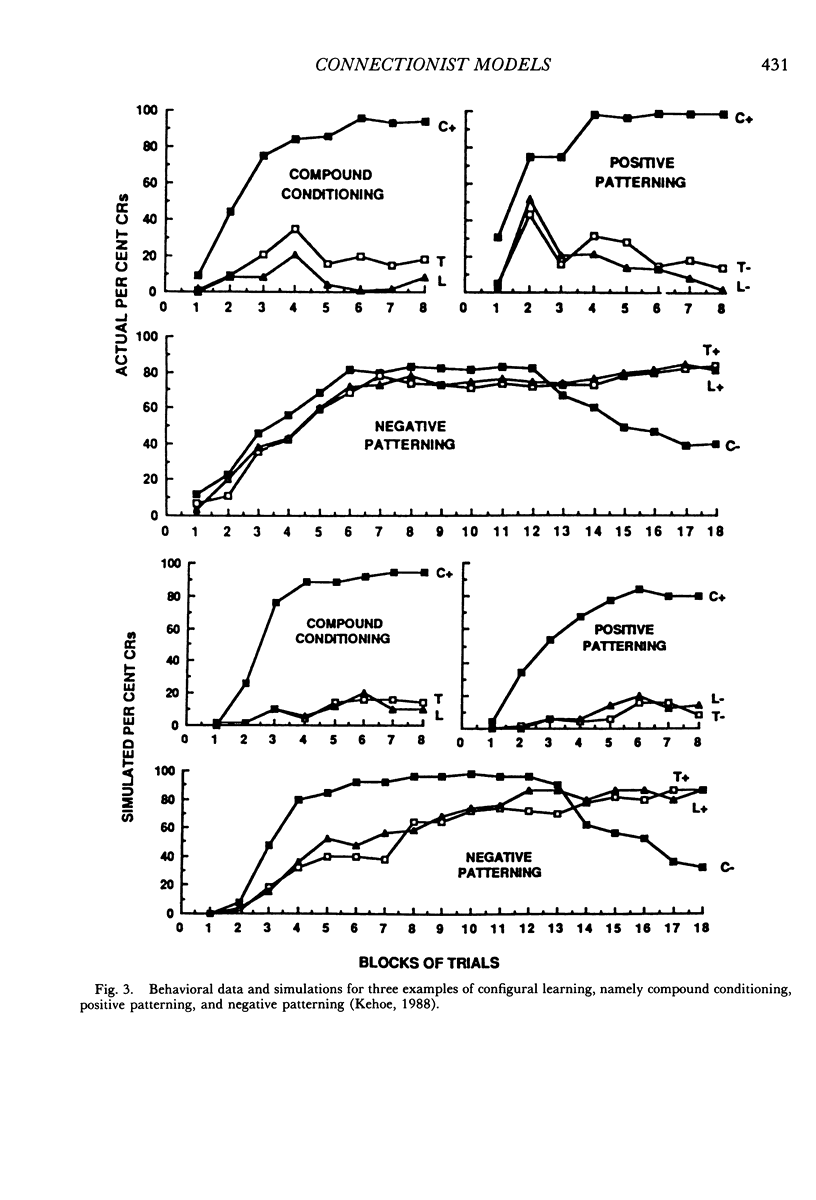
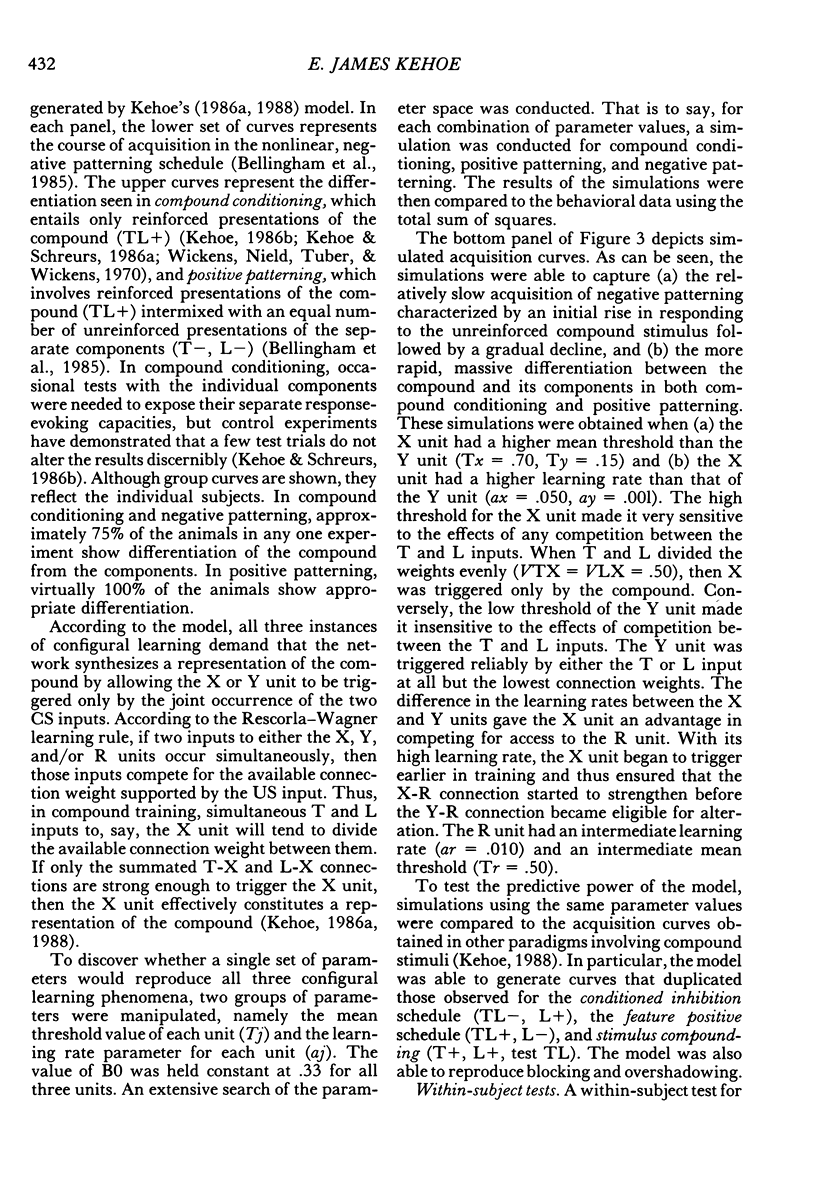
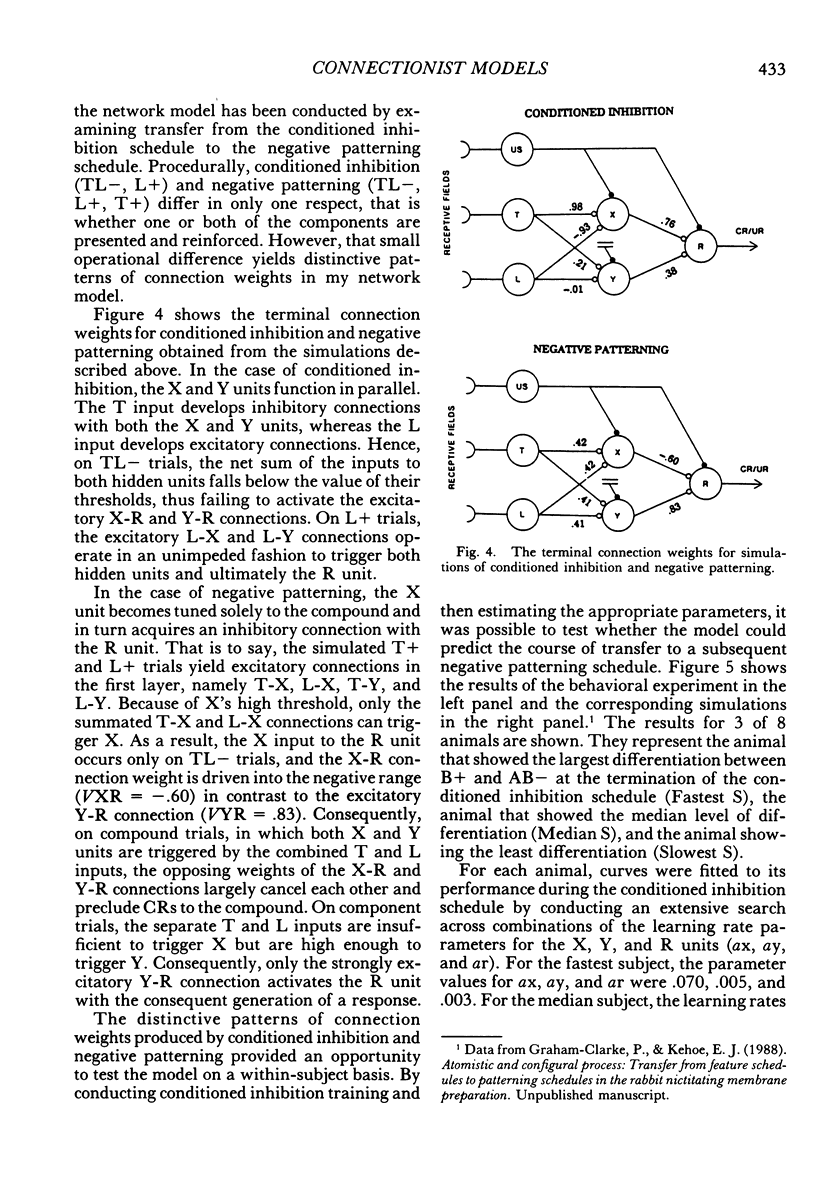
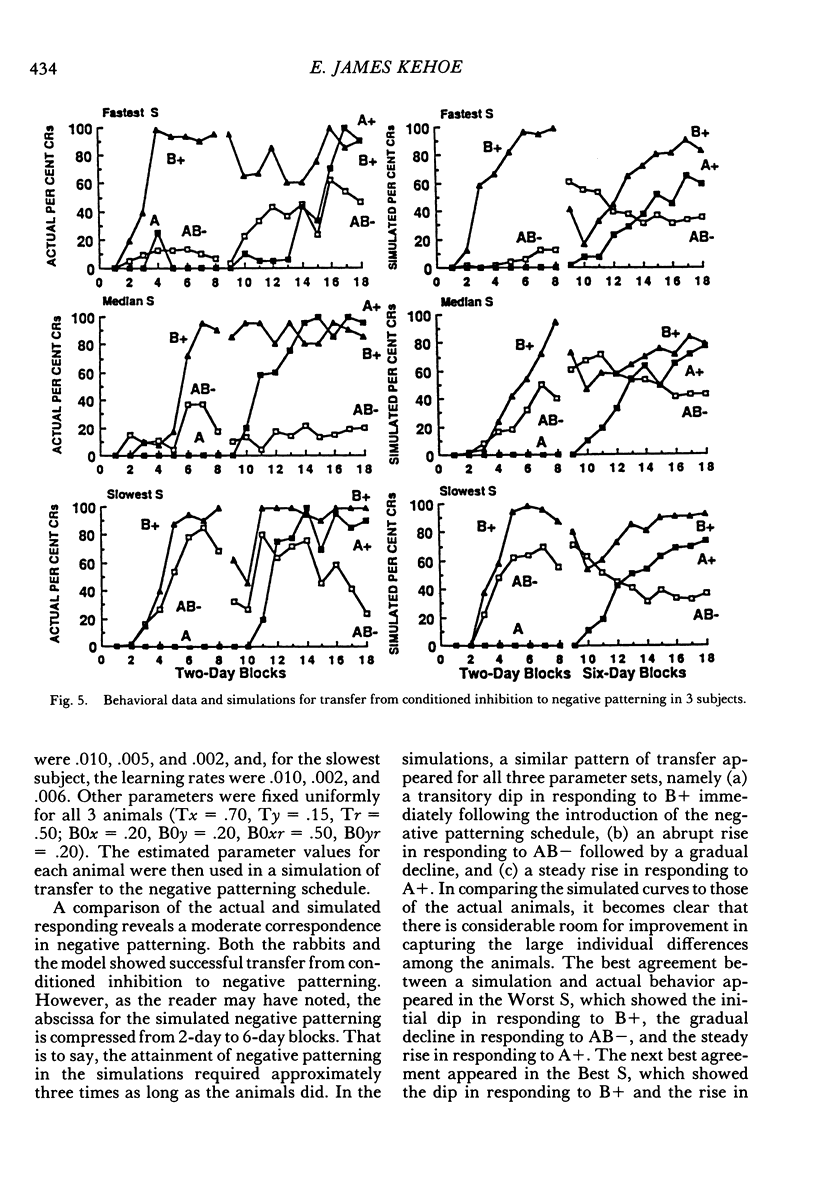
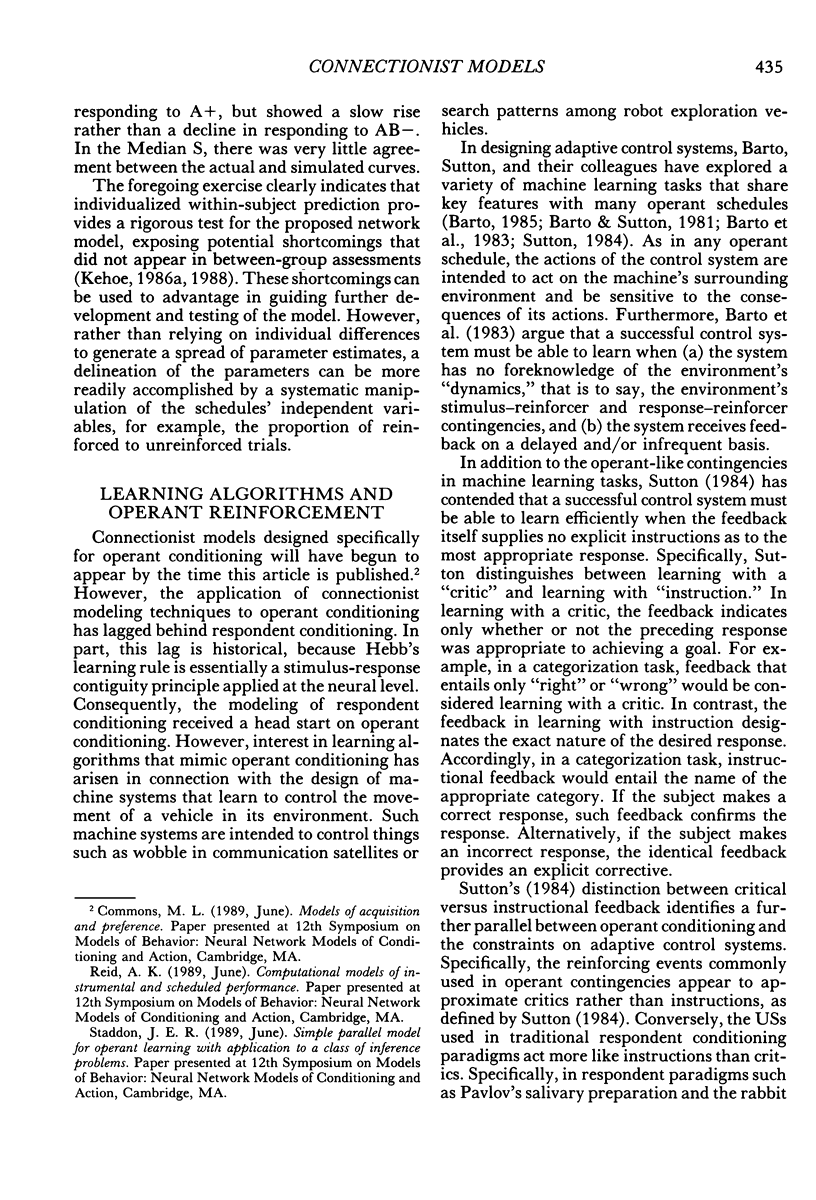
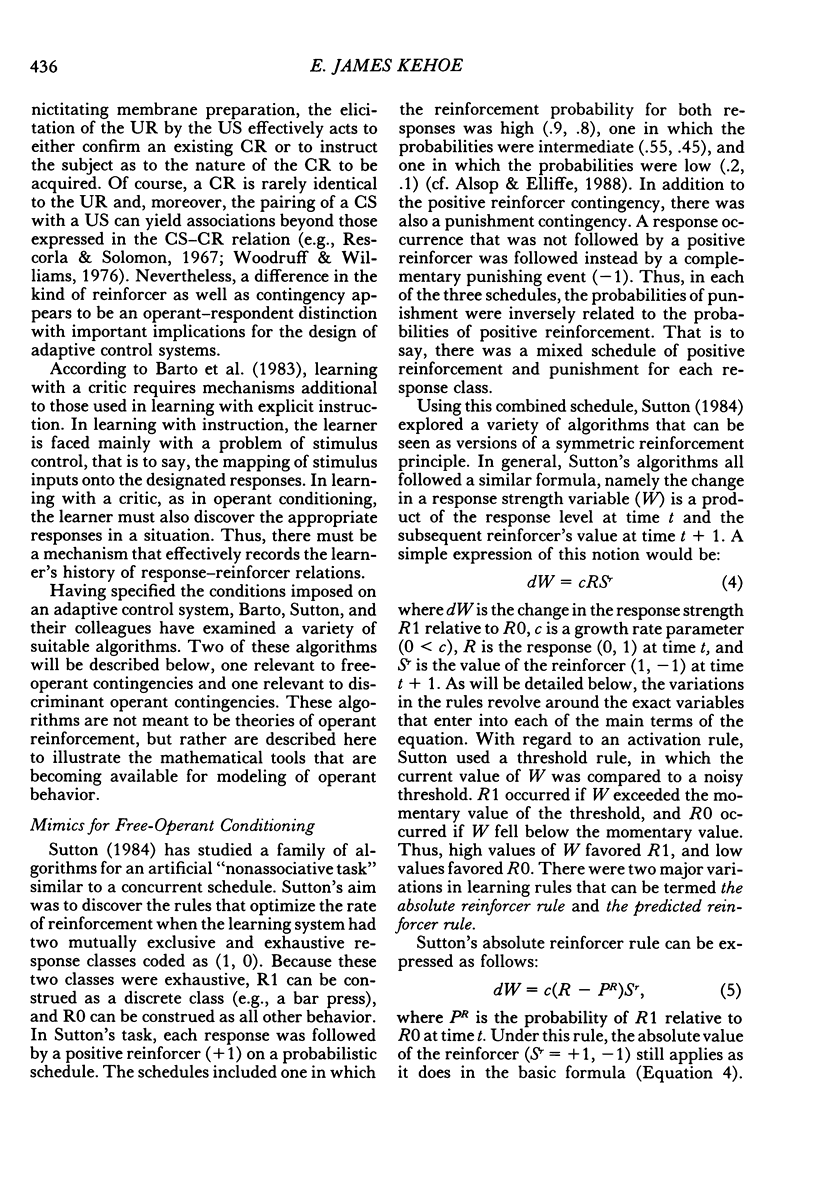
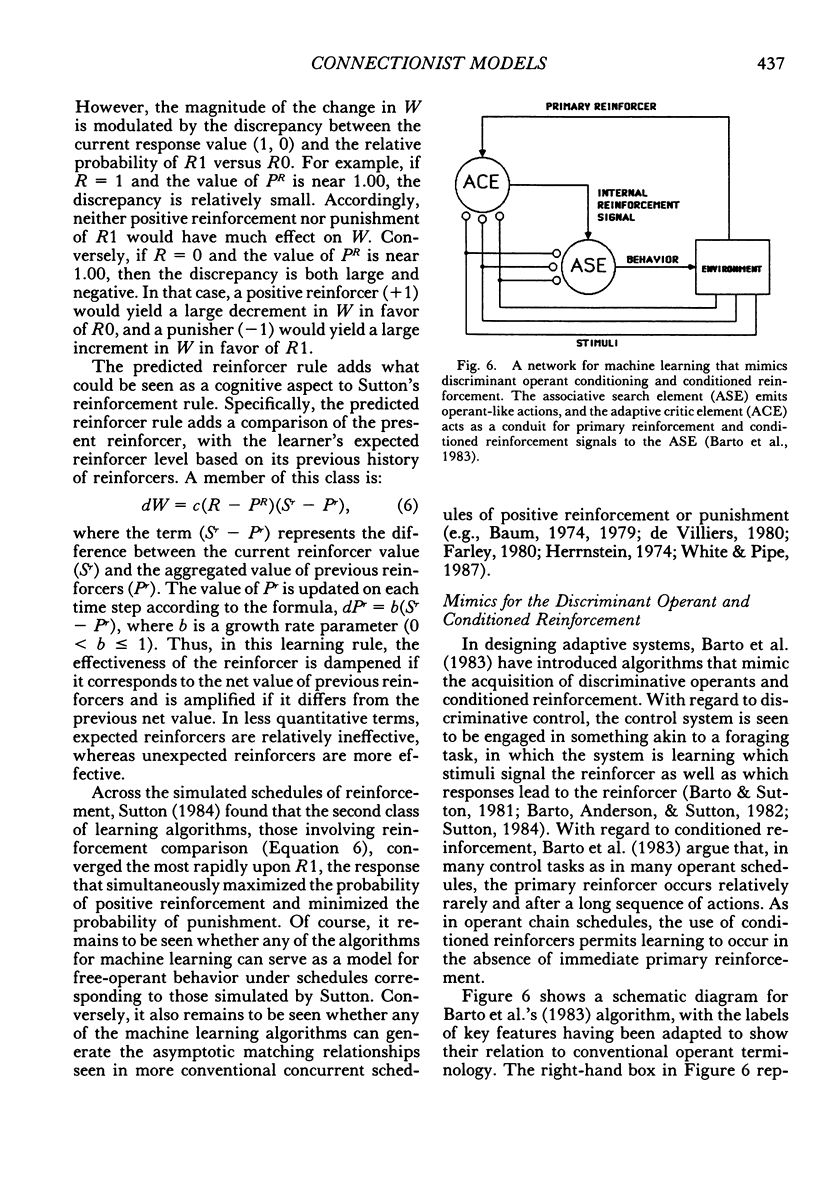
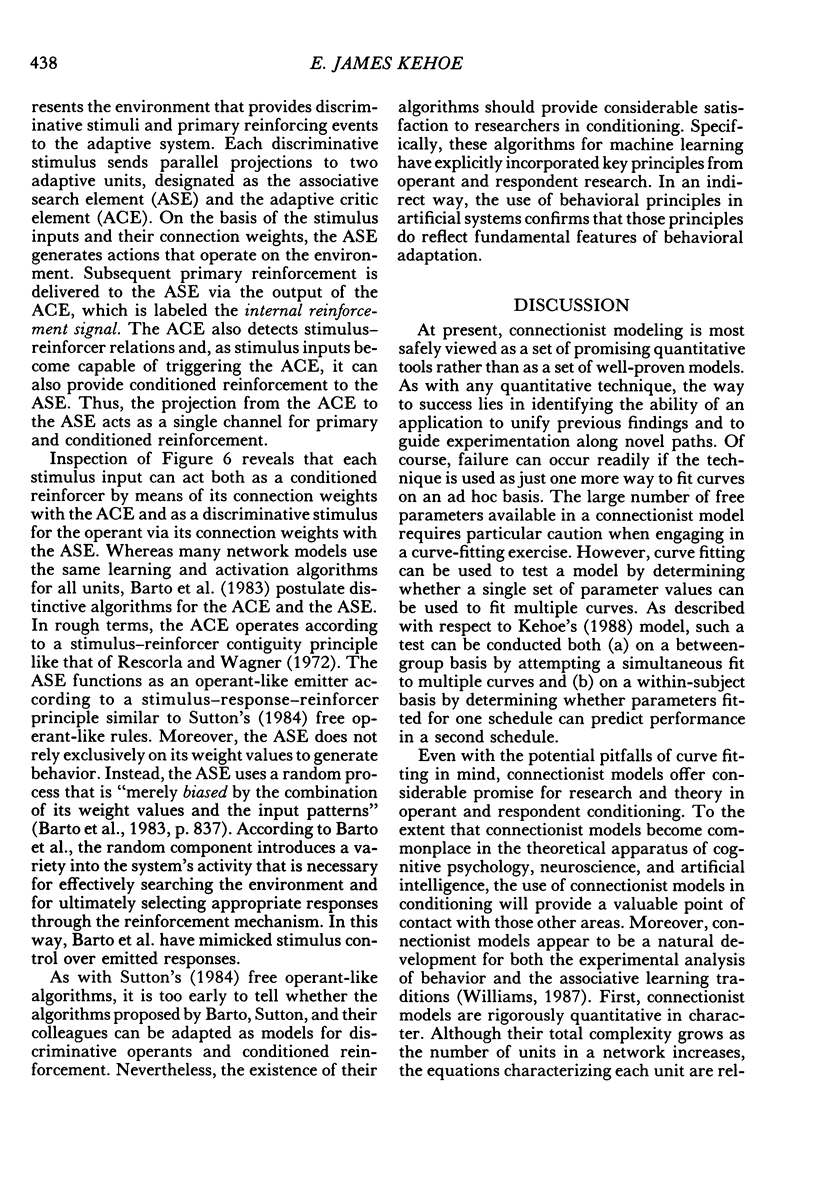

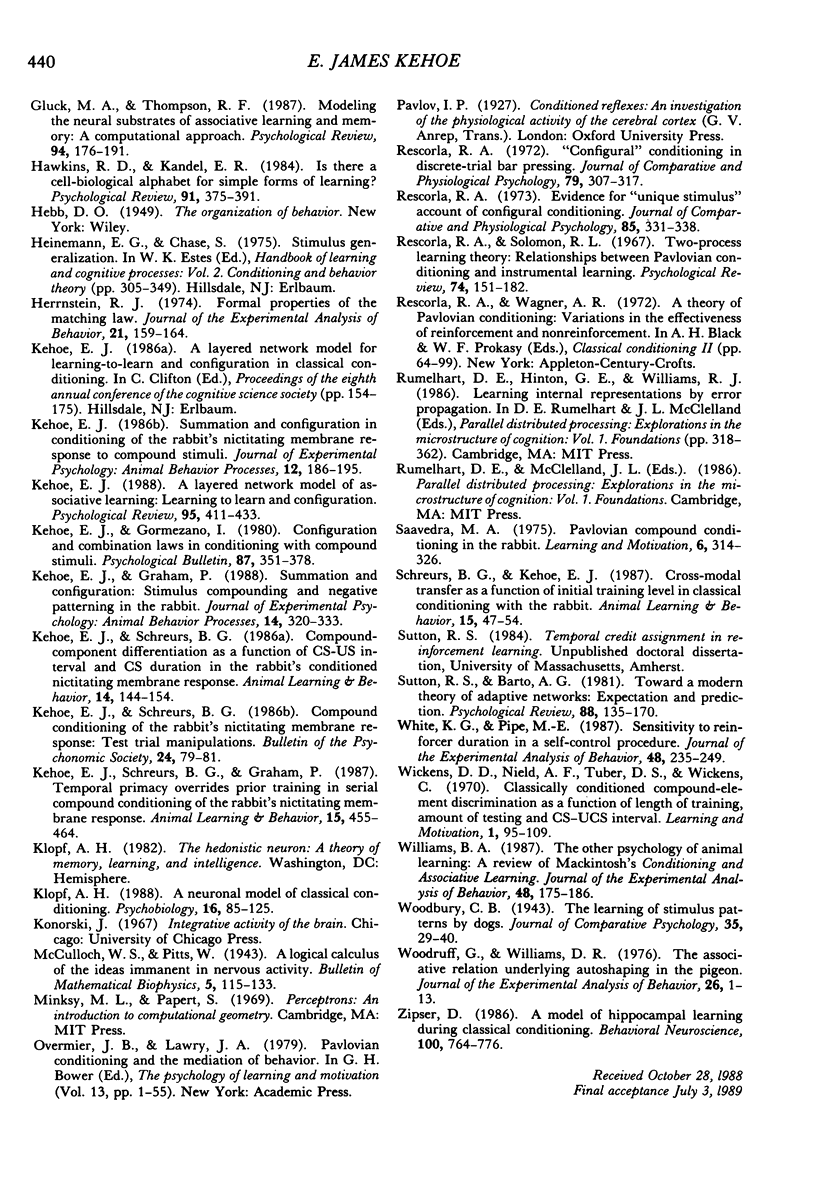
Selected References
These references are in PubMed. This may not be the complete list of references from this article.
- Alsop B., Elliffe D. Concurrent-schedule performance: Effects of relative and overall reinforcer rate. J Exp Anal Behav. 1988 Jan;49(1):21–36. doi: 10.1901/jeab.1988.49-21. [DOI] [PMC free article] [PubMed] [Google Scholar]
- Barto A. G., Anderson C. W., Sutton R. S. Synthesis of nonlinear control surfaces by a layered associative search network. Biol Cybern. 1982;43(3):175–185. doi: 10.1007/BF00319977. [DOI] [PubMed] [Google Scholar]
- Barto A. G. Learning by statistical cooperation of self-interested neuron-like computing elements. Hum Neurobiol. 1985;4(4):229–256. [PubMed] [Google Scholar]
- Barto A. G., Sutton R. S. Landmark learning: an illustration of associative search. Biol Cybern. 1981;42(1):1–8. doi: 10.1007/BF00335152. [DOI] [PubMed] [Google Scholar]
- Baum W. M. Matching, undermatching, and overmatching in studies of choice. J Exp Anal Behav. 1979 Sep;32(2):269–281. doi: 10.1901/jeab.1979.32-269. [DOI] [PMC free article] [PubMed] [Google Scholar]
- Baum W. M. On two types of deviation from the matching law: bias and undermatching. J Exp Anal Behav. 1974 Jul;22(1):231–242. doi: 10.1901/jeab.1974.22-231. [DOI] [PMC free article] [PubMed] [Google Scholar]
- Farley J. Reinforcement and punishment effects in concurrent schedules: A test of two models. J Exp Anal Behav. 1980 May;33(3):311–326. doi: 10.1901/jeab.1980.33-311. [DOI] [PMC free article] [PubMed] [Google Scholar]
- Gluck M. A., Thompson R. F. Modeling the neural substrates of associative learning and memory: a computational approach. Psychol Rev. 1987 Apr;94(2):176–191. [PubMed] [Google Scholar]
- Hawkins R. D., Kandel E. R. Is there a cell-biological alphabet for simple forms of learning? Psychol Rev. 1984 Jul;91(3):375–391. [PubMed] [Google Scholar]
- Herrnstein R. J. Formal properties of the matching law. J Exp Anal Behav. 1974 Jan;21(1):159–164. doi: 10.1901/jeab.1974.21-159. [DOI] [PMC free article] [PubMed] [Google Scholar]
- Kehoe E. J. A layered network model of associative learning: learning to learn and configuration. Psychol Rev. 1988 Oct;95(4):411–433. doi: 10.1037/0033-295x.95.4.411. [DOI] [PubMed] [Google Scholar]
- Kehoe E. J., Gormezano I. Configuration and combination laws in conditioning with compound stimuli. Psychol Bull. 1980 Mar;87(2):351–378. [PubMed] [Google Scholar]
- doi: 10.1901/jeab.1987.48-175. [DOI] [PMC free article] [Google Scholar]
- Rescorla R. A. "Configural" conditioning in discrete-trial bar pressing. J Comp Physiol Psychol. 1972 May;79(2):307–317. doi: 10.1037/h0032553. [DOI] [PubMed] [Google Scholar]
- Rescorla R. A., Solomon R. L. Two-process learning theory: Relationships between Pavlovian conditioning and instrumental learning. Psychol Rev. 1967 May;74(3):151–182. doi: 10.1037/h0024475. [DOI] [PubMed] [Google Scholar]
- Sutton R. S., Barto A. G. Toward a modern theory of adaptive networks: expectation and prediction. Psychol Rev. 1981 Mar;88(2):135–170. [PubMed] [Google Scholar]
- White K. G., Pipe M. E. Sensitivity to reinforcer duration in a self-control procedure. J Exp Anal Behav. 1987 Sep;48(2):235–249. doi: 10.1901/jeab.1987.48-235. [DOI] [PMC free article] [PubMed] [Google Scholar]
- Woodruff G., Williams D. R. The associative relation underlying autoshaping in the pigeon. J Exp Anal Behav. 1976 Jul;26(1):1–13. doi: 10.1901/jeab.1976.26-1. [DOI] [PMC free article] [PubMed] [Google Scholar]
- Zipser D. A model of hippocampal learning during classical conditioning. Behav Neurosci. 1986 Oct;100(5):764–776. doi: 10.1037//0735-7044.100.5.764. [DOI] [PubMed] [Google Scholar]
- de Villiers P. A. Toward a quantitative theory of punishment. J Exp Anal Behav. 1980 Jan;33(1):15–25. doi: 10.1901/jeab.1980.33-15. [DOI] [PMC free article] [PubMed] [Google Scholar]


